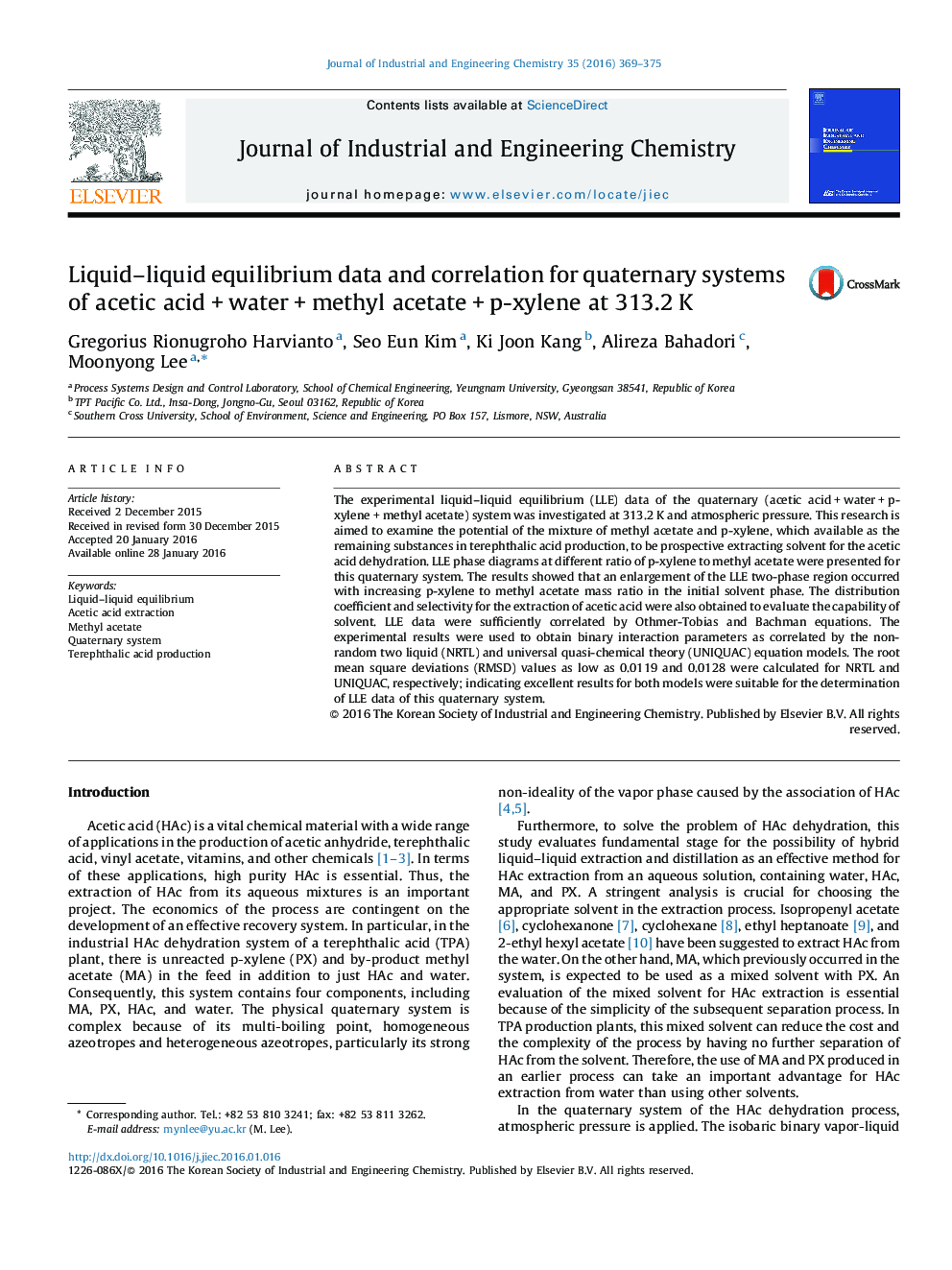| Article ID | Journal | Published Year | Pages | File Type |
|---|---|---|---|---|
| 227962 | Journal of Industrial and Engineering Chemistry | 2016 | 7 Pages |
•LLE of acetic acid, water, methyl acetate, and p-xylene was investigated for acetic acid extraction.•Reliability of experimental data was verified using mathematical correlations.•Binary interaction parameters of the quaternary system were obtained for NRTL and UNIQUAC models.•The low value of RMSD showed the models predict the LLE successfully.•Methyl acetate and p-xylene showed good properties as a mixed solvent for TPA production processes.
The experimental liquid–liquid equilibrium (LLE) data of the quaternary (acetic acid + water + p-xylene + methyl acetate) system was investigated at 313.2 K and atmospheric pressure. This research is aimed to examine the potential of the mixture of methyl acetate and p-xylene, which available as the remaining substances in terephthalic acid production, to be prospective extracting solvent for the acetic acid dehydration. LLE phase diagrams at different ratio of p-xylene to methyl acetate were presented for this quaternary system. The results showed that an enlargement of the LLE two-phase region occurred with increasing p-xylene to methyl acetate mass ratio in the initial solvent phase. The distribution coefficient and selectivity for the extraction of acetic acid were also obtained to evaluate the capability of solvent. LLE data were sufficiently correlated by Othmer-Tobias and Bachman equations. The experimental results were used to obtain binary interaction parameters as correlated by the non-random two liquid (NRTL) and universal quasi-chemical theory (UNIQUAC) equation models. The root mean square deviations (RMSD) values as low as 0.0119 and 0.0128 were calculated for NRTL and UNIQUAC, respectively; indicating excellent results for both models were suitable for the determination of LLE data of this quaternary system.
Graphical abstractFigure optionsDownload full-size imageDownload as PowerPoint slide
